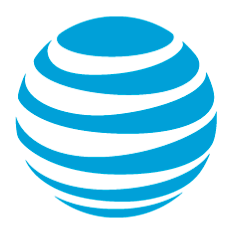AT&T Inc. (NYSE:T) reported third-quarter results yesterday that showed, in the telecom’s view, “solid subscriber growth in the company’s market focus areas of wireless and fiber broadband while continuing to reflect strong cash flows, financial strength and business resiliency.” The company also updated guidance and now expects 2020 free cash flow of $26 billion or higher, with a dividend payout ratio in the high 50s.
“We delivered a solid quarter with good subscriber momentum in our market focus areas of connectivity and software-based entertainment,” said AT&T CEO John Stankey. “Wireless postpaid growth was the strongest that it’s been in years with one million net additions, including 645,000 phones. We added more than 350,000 fiber broadband customers and are on track to grow our fiber base by more than 25 percent this year. And we continue to grow and scale HBO Max, with total domestic HBO and HBO Max subscribers topping 38 million — well ahead of our expectations for the full year. Our strong cash flow in the quarter positions us to continue investing in our growth areas and pay down debt. We now expect 2020 free cash flow of $26 billion or higher with a full-year dividend payout ratio in the high 50s percent.”
“There is a lot here that is better than expected,” said Craig Moffett of MoffettNathanson. “The question is whether the good is 1) sustainable, and 2) sufficient. The sustainability question relates to Mobility. The subscriber results in Mobility were better than just ‘good.’ They were a genuine positive. But can AT&T’s success be sustained in the face of a 5G investment cycle that favors T-Mobile today, and that will require big spending tomorrow?” Moffett asked.
AT&T’s consolidated revenues for the third quarter totaled $42.3 billion versus $44.6 billion in the year-ago quarter. The COVID-19 pandemic impacted revenues across all businesses, particularly WarnerMedia and also domestic wireless service revenues, primarily from lower international roaming. For the quarter, revenue declines included domestic video, Warner Bros. television and theatrical products, legacy wireline services and Latin America due to foreign exchange pressure. These declines were partly offset by higher wireless equipment revenues and higher advertising revenues associated with timing the shift of sports from the first half of 2020.
Operating expenses were $36.2 billion versus $36.7 billion in the year-ago quarter. Expenses decreased from lower Entertainment Group costs, lower Warner Bros. film and television production costs associated with lower revenues, and foreign exchange impacts on Latin America expenses. These decreases were partly offset by higher Turner programming costs due to the shift of sports from the first half of the year, higher HBO Max investments, incremental COVID-19 costs and higher subscriber acquisition and fulfillment costs.
Operating income was $6.1 billion versus $7.9 billion in the year-ago quarter, due to the impact of lower revenues and operating expenses and incremental COVID-19 costs. Operating income margin was 14.5 percent versus 17.7 percent in the year-ago quarter. When adjusted for amortization and other items, operating income was $8.2 billion versus $9.9 billion in the year-ago quarter, and operating income margin was 19.4 percent versus 22.2 percent in the year-ago quarter.





Reader Interactions